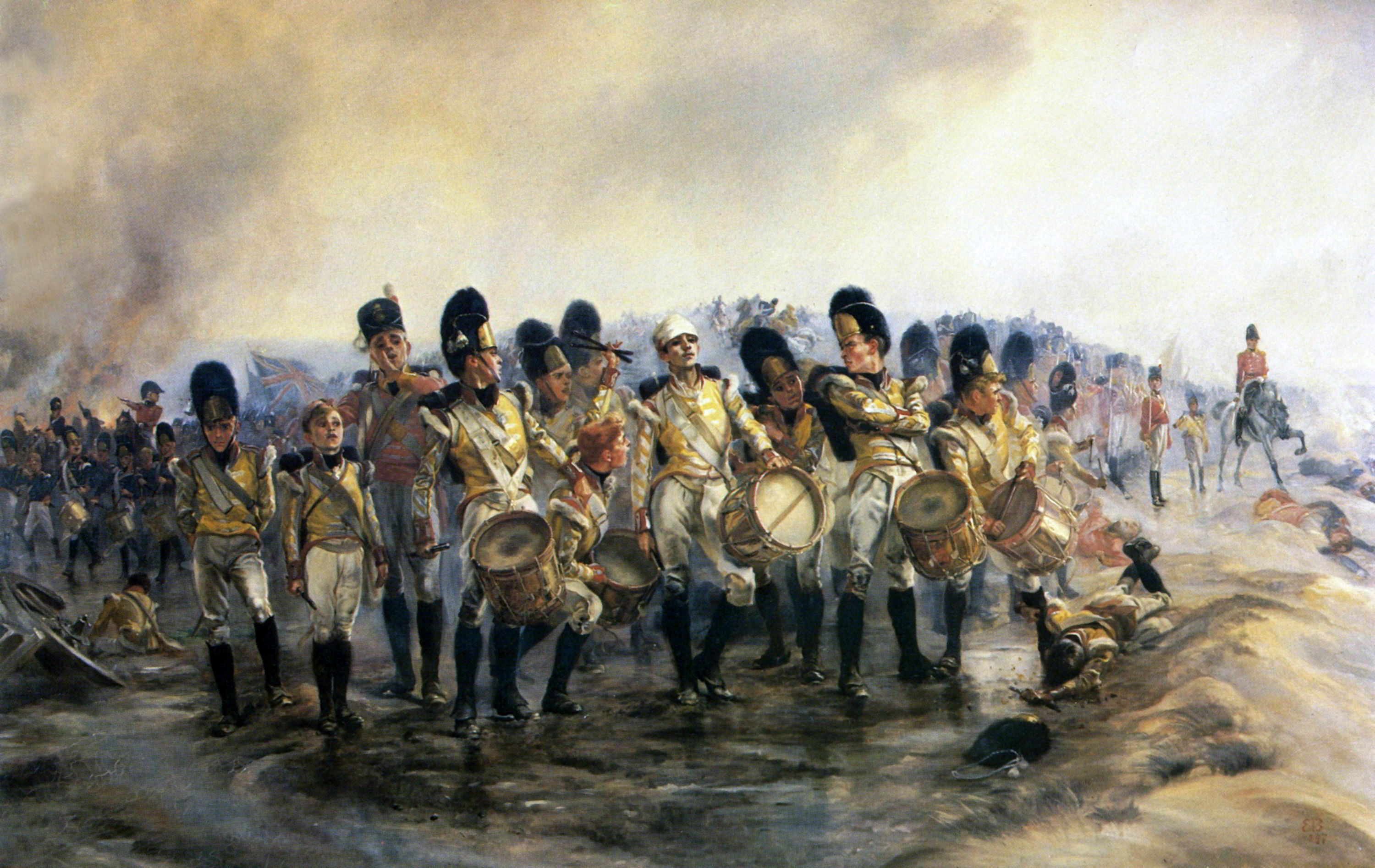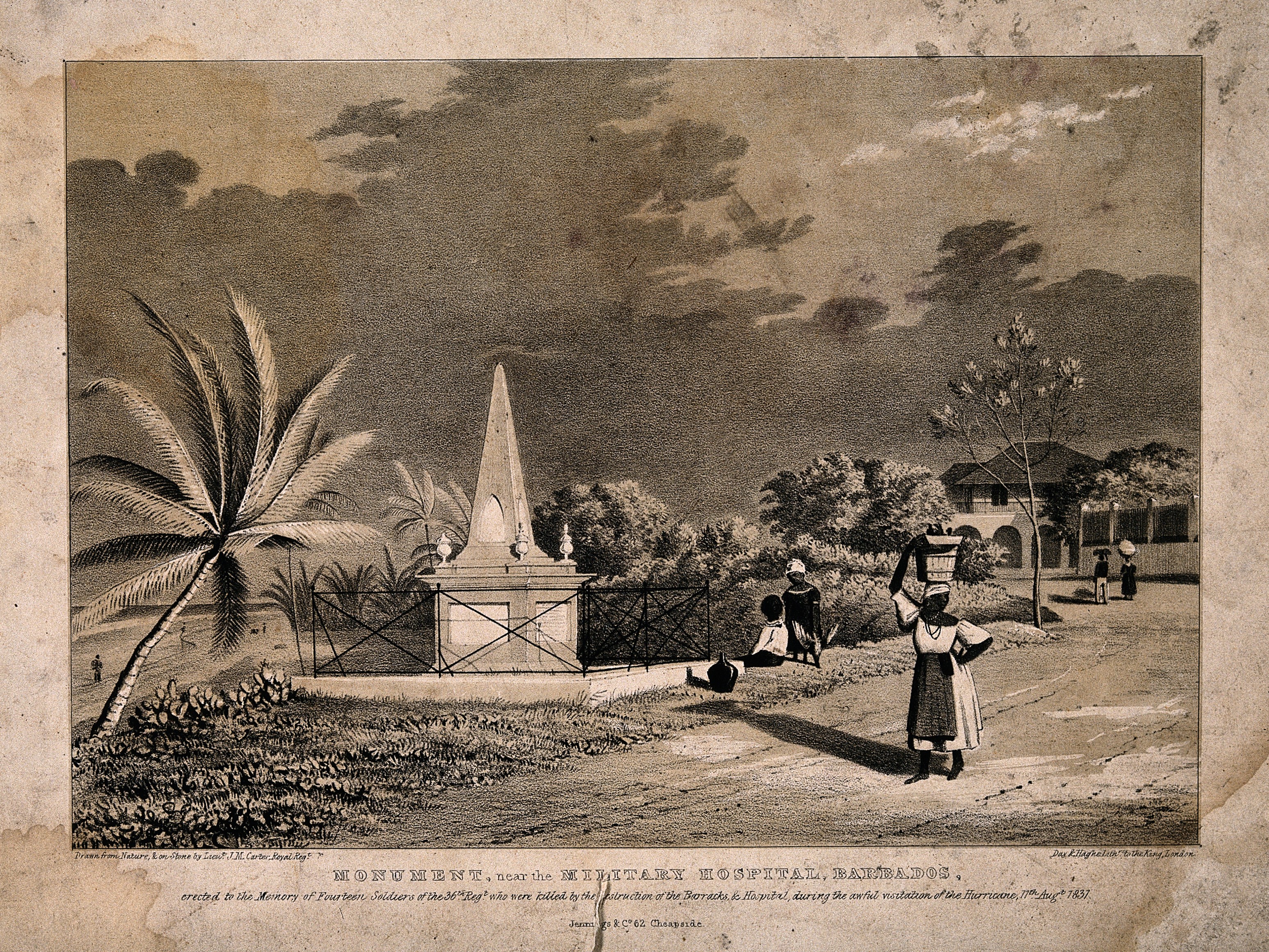|
Barbados Defence Force Band
The Barbados Defence Force Band (also known as the Zouave Band), is a musical element of the reserve units that make up the Headquarters Company, Barbados Regiment and the Barbados Defence Force. The musicians mainly range in ages between 18 and 50 years old and perform several types of music from light classics to Barbadian native music. The band is currently directed by Director of Music, Lieutenant Brian Cole. It has also participated military events of the Jamaica Defence Force, parading alongside the JDF Band, The Jamaica Regiment Band and Corps of Drums at the request of the JDF. History A Corps of Drums remained active in the Barbados Volunteer Force and the Barbados Regiment until the early 1970s. A full band was raised in 1973 as the Band and Drums of the Barbados Regiment and was fully resuscitated in 1987 for the occasion of the Trooping the Colour parade in Barbados. It remained active until the early 1990s, and after a brief hiatus, the band was again revived as the ... [...More Info...] [...Related Items...] OR: [Wikipedia] [Google] [Baidu] |
Regimental Band, Jamaica, 1907
A regiment is a military unit. Its role and size varies markedly, depending on the country, service, or specialisation. In Medieval Europe, the term "regiment" denoted any large body of front-line soldiers, recruited or conscripted in one geographical area, by a leader who was often also the feudal lord ''in capite'' of the soldiers. Lesser barons of knightly rank could be expected to muster or hire a company or battalion from their manorial estate. By the end of the 17th century, infantry regiments in most European armies were permanent units, with approximately 800 men and commanded by a colonel. Definitions During the modern era, the word "regiment" – much like "corps" – may have two somewhat divergent meanings, which refer to two distinct roles: # a front-line military formation; or # an administrative or ceremonial unit. In many armies, the first role has been assumed by independent battalions, battlegroups, task forces, brigades and other, similarly sized oper ... [...More Info...] [...Related Items...] OR: [Wikipedia] [Google] [Baidu] |
Presentation Of Colours
The Presentation of Colours is a military ceremony that marks an anniversary or significant event in the history of a particular regiment or similar military unit. This involves the presentation of a new version of the Military colours, standards and guidons, regimental colour to a regiment or equivalent formation in their respective armed forces service branch. This is a traditional ceremony that was pioneered by the British Armed Forces and is today used in most Commonwealth of Nations, Commonwealth countries. Background In the military, the Military colours, standards and guidons, colours originally acted as a Wikt:rally#Verb, rallying point for troops and as a way to locate their Commanding officer, commander. It originated in Ancient Egypt around 5,000 years ago, with the practice also being used in the Roman Empire and the Roman army specifically. It was made more significant in the Middle Ages when military colours were formalised with the coat of arms of the ... [...More Info...] [...Related Items...] OR: [Wikipedia] [Google] [Baidu] |
Zouave
The Zouaves () were a class of light infantry regiments of the French Army and other units modelled on it, which served between 1830 and 1962, and served in French North Africa. The zouaves were among the most decorated units of the French Army. It was initially intended that the zouaves would be a regiment of Berber volunteers from the Zwawa group of tribes in Algeria ("Zwawa" being the origin of the French term '' zouave'') who had gained a martial reputation fighting for local rulers under the Regency of Algiers. The regiment was to consist of 1,600 Zwawa Berbers, French non-commissioned officers and French officers. 500 Zwawa were recruited in August and September 1830. However, twelve years later, this idea was dropped. More zouave regiments were raised and the men recruited to serve in them were almost exclusively French or people of French descent born in French Algeria (''pieds-noirs''), a policy which continued until the final dissolution of these regiments after the ... [...More Info...] [...Related Items...] OR: [Wikipedia] [Google] [Baidu] |
Pipe Bands
A pipe band is a musical ensemble consisting of pipers and drummers. The term pipes and drums, used by military pipe bands is also common. The most common form of pipe band consists of a section of pipers playing the Great Highland bagpipe, a section of snare drummers (often referred to as 'side drummers'), several tenor drummers and usually one, though occasionally two, bass drummers. The tenor drummers and bass drummer are referred to collectively as the 'bass section' (or in North America as the 'midsection'), and the entire drum section is collectively known as the drum corps. The band follows the direction of the pipe major; when on parade the band may be led by a drum major, who directs the band with a mace. Standard instrumentation for a pipe band involves 6 to 25 pipers, 3 to 10 side drummers, 1 to 6 tenor drummers and 1 bass drummer. Occasionally this instrumentation is augmented to include additional instruments (such as additional percussion instruments or keyboard ... [...More Info...] [...Related Items...] OR: [Wikipedia] [Google] [Baidu] |
Barbados Police Band
The Barbados Police Service Band, previously known as the Royal Barbados Police Band part of the Barbados Police Service, has been a prominent musical group in Barbados since its foundation in 1889 and is one of the oldest police bands in the world. Police bands are common throughout the Anglophone Caribbean, and are known for playing a wide variety of Caribbean music, as well as marches and popular songs. History When the RBPF was first established it was with a complement of 19 serving Policemen. At that time they wore regulation police uniforms, and their selection was due to the love for music and the knowledge of the art. The first Bandmaster was Capt. Willocks who came to the Island with the 2nd. Battalion of the West Riding Regiment, as its Bandmaster. In 1914, Sergeant Major Emmanuel Bennernagel of the British Guiana Militia Band was appointed as Bandmaster, and took it on its first overseas tour to St. Lucia in 1945. He was also responsible for instituting the Band Cadet sy ... [...More Info...] [...Related Items...] OR: [Wikipedia] [Google] [Baidu] |
Police Band (music) , a British rock band
{{disambig ...
Police band may refer to: * The range of frequencies used by police radios, see spectrum management * Police band (music), set up by a police force * The Police The Police were an English rock band formed in London in 1977. Within a few months of their first gig, the line-up settled as Sting (lead vocals, bass guitar, primary songwriter), Andy Summers (guitar) and Stewart Copeland (drums, percussi ... [...More Info...] [...Related Items...] OR: [Wikipedia] [Google] [Baidu] |
Corps Of Drums
A corps of drums, sometimes known as a fife and drum corps or simply field music, is a traditional European military music formation. Historically, a Corps of Drums' primary role was communication. Today, the primary role of a Corps of Drums is ceremonial, performing in parades and military ceremonies. Besides drums, this formation may contain a variety of instruments, including trumpets, bugles, and fifes. Origin Instruments, particularly drums, have been used on battlefields as signaling devices across many different cultures. Unlike army musicians who form bands and are usually limited to auxiliary duties in wartime, drummers in a Corps of Drums are principally fully trained infantry soldiers, with recruitment as drummers coming after standard infantry training. Its history can be traced back to Swiss mercenaries in the early Renaissance. By the early 16th century, each company of infantry soldiers had a single drummer and a single fife player. These two musicians wou ... [...More Info...] [...Related Items...] OR: [Wikipedia] [Google] [Baidu] |
Bridgetown
Bridgetown (UN/LOCODE: BB BGI) is the Capital city, capital and largest city of Barbados. Formerly The Town of Saint Michael, the Greater Bridgetown area is located within the Parishes of Barbados, parish of Saint Michael, Barbados, Saint Michael. Bridgetown is sometimes locally referred to as "The City", but the most common reference is simply "Town". As of 2014, its metropolitan population stands at roughly 110,000. The ''Bridgetown'' port, found along Carlisle Bay, Barbados, Carlisle Bay (at ) lies on the southwestern coast of the island. Parts of the Greater Bridgetown area (as roughly defined by the Ring road, Ring Road Bypass or more commonly known as the ABC Highway), sit close to the borders of the neighbouring parishes Christ Church, Barbados, Christ Church and Saint James, Barbados, St. James. The Grantley Adams International Airport for Barbados, is located southeast of Bridgetown city centre. It is the largest and only airport on the island. It has daily flights t ... [...More Info...] [...Related Items...] OR: [Wikipedia] [Google] [Baidu] |
Garrison Historic Area
St. Ann's Garrison, or more commonly known as "The Garrison", is a small district located in the country of Barbados. This Garrison Historic Area is situated about south of National Heroes Square, Heroes Square in the capital-city Bridgetown, and just west of the village of Hastings, Christ Church, Barbados, Hastings in the neighbouring parish of Christ Church, Barbados, Christ Church. It is dominated by its historic horse race-track, located on the parade ground called the Garrison Savannah. The Garrison area additionally contains many historic buildings including barracks for military personnel. The district is bisected by Highway 7, with Saint Ann's Fort, where the Barbados Defence Force (BDF) is based, lying to the west. History During both the eighteenth and nineteenth centuries the Garrison was the base and headquarters for members of the British West India Regiment in Barbados. In 1751, the future leader of the American Revolution and first president of the Unit ... [...More Info...] [...Related Items...] OR: [Wikipedia] [Google] [Baidu] |
Music Of Barbados
The music of Barbados includes distinctive national styles of folk and popular music, including elements of Western classical and religious music. The culture of Barbados is a syncretic mix of African and British elements, and the island's music reflects this mix through song types and styles, instrumentation, dances, and aesthetic principles. Barbadian folk traditions include the Landship movement, which is a satirical, informal organization based on the Royal Navy, tea meetings, tuk bands and numerous traditional songs and dances. In modern Barbados, popular styles include calypso, spouge, contemporary folk and world music. Barbados is, along with Guadeloupe, Martinique, Trinidad, Cuba, Puerto Rico, and the Virgin Islands, one of the few centres for Caribbean jazz.De Ledesma and Popplewell, p. 518. Characteristics and musical identity Bajan culture is syncretic, and the island's musical culture is perceived as a mixture of African and British musics, with certain uniqu ... [...More Info...] [...Related Items...] OR: [Wikipedia] [Google] [Baidu] |
State Funeral
A state funeral is a public funeral ceremony, observing the strict rules of protocol, held to honour people of national significance. State funerals usually include much pomp and ceremony as well as religious overtones and distinctive elements of military tradition. Generally, state funerals are held in order to involve the general public in a national day of mourning after the family of the deceased gives consent. A state funeral will often generate mass publicity from both national and global media outlets. History State funerals already existed in antiquity. In ancient Athens, for example, fallen soldiers were regularly buried in a public ceremony. In the Roman Empire, a state funeral (''funera publica'') could be instructed by the senate for the city of Rome, whereas city councils could instruct a communal state funeral. By country Czech Republic Canada India On 17 November 2012, Bal Thackeray was accorded a state funeral in the city of Mumbai. On 10 October ... [...More Info...] [...Related Items...] OR: [Wikipedia] [Google] [Baidu] |







